NVIDIA Announces GeForce GTX 1060: Starting at $249, Available July 19th
by Ryan Smith on July 7, 2016 9:00 AM EST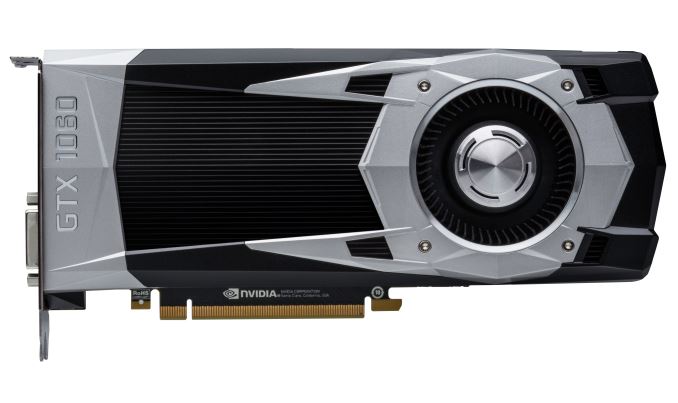
Excitingly, GPU Season 2016 is now in full swing. In the last two months we have seen NVIDIA launch a pair of high-end cards – the Pascal-based GeForce GTX 1080 and GTX 1070 – and just last week rival AMD launched their first card based on their Polaris architecture, the mainstream-focused Radeon RX 480. Powered by TSMC’s 16nm FinFET process and GlobalFoundries’ 14nm FinFET process respectively, NVIDIA and AMD have delivered better performance for lower prices, and with lower power consumption as well.
Of course no GPU product stack is complete with just a single chip and a handful of cards, and over the coming months we are going to see both vendors rolling out the rest of their respective stacks. To that end, kicking off this second wave of updates today is NVIDIA, who in traditional top-to-bottom fashion is announcing the next card in their product stack, GeForce GTX 1060. Powered by the company’s new GP106 GPU, GTX 1060 will be NVIDIA’s play at the mainstream/enthusiast market.
| NVIDIA GPU Specification Comparison | ||||||
| GTX 1080 | GTX 1070 | GTX 1060 | GTX 960 | |||
| CUDA Cores | 2560 | 1920 | 1280 | 1024 | ||
| Texture Units | 160 | 120 | 80 | 64 | ||
| ROPs | 64 | 64 | 48? | 32 | ||
| Core Clock | 1607MHz | 1506MHz | ? | 1126MHz | ||
| Boost Clock | 1733MHz | 1683MHz | 1700MHz | 1178MHz | ||
| TFLOPs (FMA) | 8.9 TFLOPs | 6.5 TFLOPs | 4.4 TFLOPs | 2.4 TFLOPs | ||
| Memory Clock | 10Gbps GDDR5X | 8Gbps GDDR5 | 8Gbps GDDR5 | 7Gbps GDDR5 | ||
| Memory Bus Width | 256-bit | 256-bit | 192-bit | 128-bit | ||
| VRAM | 8GB | 8GB | 6GB | 2GB | ||
| FP64 | 1/32 | 1/32 | 1/32? | 1/32 | ||
| TDP | 180W | 150W | 120W | 120W | ||
| GPU | GP104 | GP104 | GP106 | GM204 | ||
| Transistor Count | 7.2B | 7.2B | ? | 2.94B | ||
| Manufacturing Process | TSMC 16nm | TSMC 16nm | TSMC 16nm | TSMC 28nm | ||
| Launch Date | 05/27/2016 | 06/10/2016 | 07/19/2016 | 01/22/2015 | ||
| Launch Price | MSRP: $599 Founders $699 |
MSRP: $379 Founders $449 |
MSRP: $249 Founders $299 |
$199 | ||
When it came to building the Maxwell 2 generation, NVIDIA designed GM206 as half of a GM204; half of the CUDA Cores, half of the ROPs, half of the memory bandwidth, etc. It allowed for a very straightforward progression from the bottom of the Maxwell 2 family to the top of it, maintaining the same resource balance between all of the GPUs. For the Pascal generation in turn, NVIDIA has done much the same here.
Diving into the specifications then, GTX 1060 and its GP106 GPU ships with 1280 CUDA cores, which is half the number found on GTX 1080/GP104. Similarly, this means we’re looking at half the texture units, and half of the polymorph geometry engines. At this point NVIDIA has not provided an architecture diagram for GP106, so I don’t know how NVIDIA has laid out the internal working of the card, but we’ll be looking at 10 Pascal SMs in some configuration.
However on the backend of the rendering pipeline, things are a bit more interesting NVIDIA deviates a bit from tradition, and a bit from making GP106 a true halving of GP104. Whereas you’d expect half of a GP104 to ship with a 128-bit memory bus, NVIDIA has defied expectations by giving GP106 a larger 192-bit memory bus, giving the chip 50% more memory bandwidth per CUDA core, all things held equal. NVIDIA’s no stranger to 192-bit memory buses – in fact GK106 had one – but after Maxwell, this comes as a bit of a surprise.
As this is only a brief introduction on NVIDIA’s part – little more than a teaser – I’m sure we’ll find out more about their architectural decisions in time for the full review, but I suspect that the larger bus is a compromise solution for coming up with more memory bandwidth versus GTX 960/GM206. Relative to their Maxwell predecessors, all of the other Pascal parts so far have received significant bandwidth increases in order to feed their faster GPUs. For GTX 1080 this was GDDR5X, and for GTX 1070 this was faster 8 Gbps GDDR5 combined with a unified 256-bit memory bus. For GP106 to follow this path, NVIDIA would need to either implement GDDR5X (a more costly and volume-limited technology at this time), or go with a wider memory bus, and the company has seemingly opted for the latter.
| NVIDIA Compute To Memory Bandwidth Ratios | |||||
| Video Card | FLOPs-per-byte | Total Memory Bandwidth | |||
| GTX 1080 | 25.8 | 320GB/sec | |||
| GTX 1070 | 23.5 | 256GB/sec | |||
| GTX 1060 | 21.1 | 192GB/sec | |||
| GTX 960 | 20 | 112GB/sec | |||
| GTX 660 | 12.8 | 144GB/sec | |||
In any case, the 192-bit memory bus also means that we may see an increase in the number of ROPs on the card. NVIDIA has not disclosed the ROP count, but Pascal’s internal ROP/L2/memory controller partition design means that we’re going to be looking at 6 partitions, which at 8 ROPs per would work out to 48 ROPs. If this is the case, then not only would GTX 1060 be receiving a significant boost in memory bandwidth versus its predecessor, but it would be receiving a significant increase in raw pixel throughput as well. So it will be interesting to see what the final specifications turn out to be. Note that this could also impact the raster engine count – to maintain perfect balance, Pascal needs a raster engine for every 16 ROPs – but at this point that’s a bit more conjectural.
Moving on to clockspeeds, the GTX 1060 will be shipping with a 1.7GHz boost clock, which is smack-dab in the middle of the boost clocks for the GTX 1080 and GTX 1070. In other words, the card will be clocked just as high as its higher-end siblings, and the only difference will be the overall number of processing units within the GPU. On a pure SM basis this puts GTX 1060 at 4.35 TFLOPs, giving the card 67% of the compute and geometry performance of the GTX 1070. Or to compare it to the outgoing GTX 960, we’re looking at an 80% increase in those same metrics.
Backing the GP106 GPU is the aforementioned GDDR5 memory. Owing to its non-power-of-two memory bus size, GTX 1060 will be shipping with 6GB of VRAM, which is 2GB less than the GP104 cards and 2-4GB more than the older GTX 960. The card will use the same 8Gbps memory as on GTX 1070, giving the card 192GB/sec of total memory bandwidth, a hefty 71% increase over GTX 960. Combined with the increased memory compression efficiency of Pascal, it goes without saying that GTX 1060 should not find itself wanting for memory bandwidth.
Rounding out the package, let’s talk about power and thermals. NVIDIA is slotting GTX 1060 in the same TDP envelope as the outgoing GTX 960, which means 120W, making the GTX 1060 their flagship sub-150W card. We’ll of course see just how well they adhere to that in our full review, but the basic idea is that GTX 1060 should be a drop-in replacement for GTX 960, an important consideration for the sub-150W market that the card is aimed at.
In terms of performance, NVIDIA hasn’t published any internal benchmarks, but they have been rather explicit that they’re targeting GTX 980 performance. Given what we’ve seen of Pascal so far, there’s good reason to believe that a 1280 CUDA core GPU should be able to come close, though it’s going to depend on the game. My best guess is that baring more extensive power throttling, GTX 1060 should be able to come close, though less so in games that are very shader/texture heavy. In any case, coupled with NVIDIA’s 120W TDP power target, what we’re looking at is another aggressive move by NVIDIA with regards to power efficiency, bringing GTX 980 performance down from 165W to 120W.
For the July 19th launch, much like their higher end cards NVIDIA is going to be launching with two designs and two price points. Officially the GTX 1060 starts at $249; this will be for partner custom cards, and I expect this will be for the usual single/dual fan open air cooler designs that we saw with the GTX 960. Meanwhile at $299 NVIDIA is launching a Founders Edition card, which implements a full blower.
However this is where the similarities end. Unlike the GTX 1080/1070 launch, the 19th is a hard launch for both the GTX 1060FE and for partner custom cards, and NVIDIA is expecting the bulk of the cards sold to be these custom cards. In this sense the GTX 1060 launch is more akin to the GTX 960 launch, as NVIDIA has more often than not opted to pass on producing reference cards for their mainstream cards.
In fact NVIDIA’s partners won’t even be selling the GTX 1060FE; the card will only be available through NVIDIA’s website. NVIDIA is calling the GTX 1060FE a “special limited edition” card, and though the company isn’t commenting on the matter, I strongly suspect that the GTX 1060FE is a limited run that NVIDIA will only be selling for a couple of months or so. NVIDIA has done similar things in the past, though ultimately when they curtail production is entirely up to them. I do wonder how NVIDIA’s partners feel about the company competing with them in the etail market, but with NVIDIA charging a significant $50/20% price premium, the partners have a lot of room to play with and improve on the NVIDIA reference design.
In terms of design, the GTX 1060 Founders Edition unsparingly ends up being a slightly smaller version of the common design shared by the GTX 1080 and GTX 1070 Founders Edition cards. The full care measures 9.75-inches long, 0.75-inches shorter than the GTX 1080/1070. Of that, only 6.75-inches is the actual reference PCB, with the final 3-inches housing the sole 6-pin power connector, the rest of the heatsink, and the radial blower fan. Given the size of the PCB, I wouldn’t be surprised to see some fairly small semi-custom cards come out of the partners, pairing up the PCB with smaller coolers. Meanwhile the display I/O configuration is identical to the other Pascal cards at 3 DP 1.4 ports, 1 HDMI 2.0b port, and 1 DL-DVI-D port. Also, the SLI connector is absent from this board.
Finally, looking at the larger competitive and pricing landscape, the GTX 1060 is consistently priced with NVIDIA’s other Pascal cards, which is to say higher than the 900 series. Overall, GTX 1000 series pricing is closer to that of the 700 series, with the GTX 1060 launching at the same $249 price point the GTX 760 launched at back in 2013. As a result NVIDIA is going to miss the $199 mainstream sweet spot that the GTX 960 launched at, at least for the time being.
Whether that’s a blessing or not for AMD however remains to be seen. Overall GTX 1060 is clearly a shot across the bow at AMD’s recently launched Radeon RX 480, not quite overlapping it in price but otherwise going after the same target market with very aggressive performance and power targets. For various reasons 4GB RX 480 cards are in extremely short supply, and if this is still the case in 2 weeks, then the practical competition would be the $239 RX 480 versus the $249 GTX 1060 until AMD’s partners further ramp up the 4GB cards. Even then, I don’t know if things are cut and dry for the 4GB card given its more limited memory capacity.
Speaking of short supply though, it remains to be seen whether NVIDIA can keep the GTX 1060 in supply over the next couple of months. Certainly the first batches of cards will sell out on the 19th, as this has happened with previous launches. But what’s in question is whether NVIDIA and their partners can keep them in supply with the batches after that. So far NVIDIA has not been able to keep the GTX 1080 and GTX 1070 in supply – at the time of this writing, Newegg has a single card in stock – and the launch of the GTX 1060 won’t help that.
In practice NVIDIA has been receiving/processing GP106 for months, so the formal launch of GTX 1060 doesn’t change anything, but it none the less hints that NVIDIA is struggling at some point in their supply chain to meet demand. Officially the company has stated that they expect broad availability for the card and that they are ramping up supply “really fast,” but it’s definitely a case of where we’re going to have to wait and see. Ultimately buyers after the GTX 1060 may be better served snagging it on launch day, where the greatest number of units are available at once.


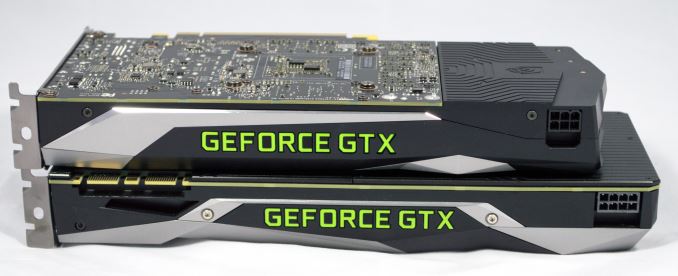
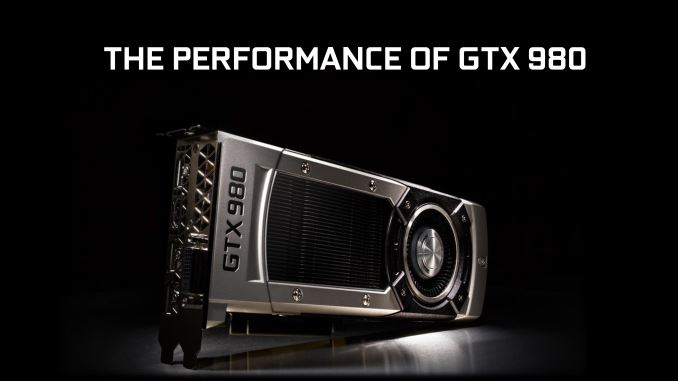
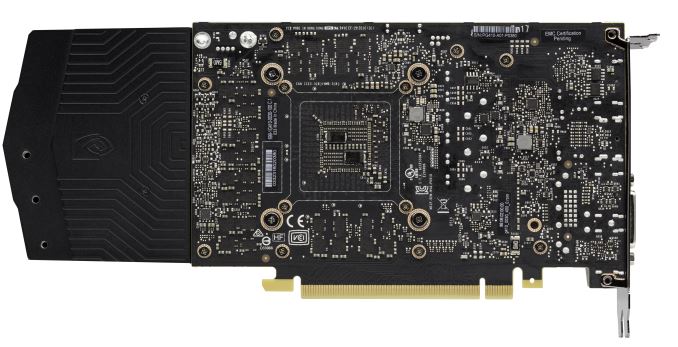
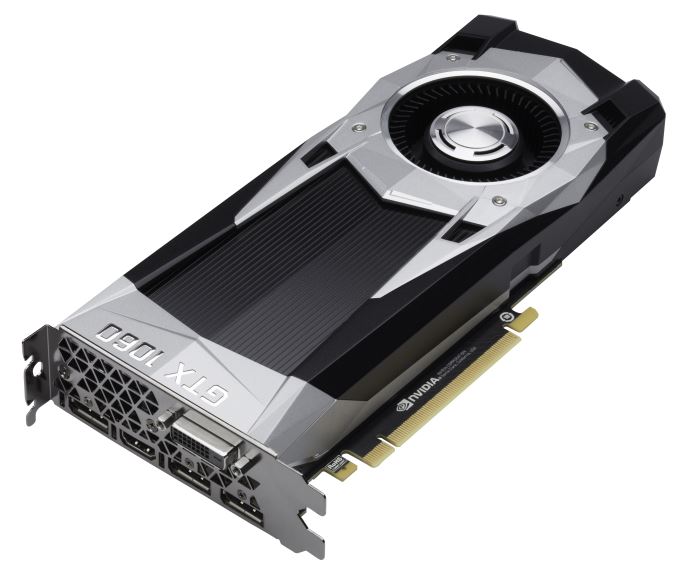














228 Comments
View All Comments
fanofanand - Thursday, July 7, 2016 - link
He was addressing the original post in that sub-thread which declared "the end is nigh" for AMD. I get what you are saying and fanboyism is annoying at best, but his comments were not off-topic for the sub-thread. To make things worse, your comment literally adds zero to the discussion either. Pot calling the kettle black methinks?JoeyJoJo123 - Thursday, July 7, 2016 - link
>To make things worse, your comment literally adds zero to the discussion either. Pot calling the kettle black methinks?Says the kettle?
My point is that there's no reason to argue with a fanboy's opinion. They can believe the end is nigh. People have been saying that about AMD/Intel/nVidia for over a decade. Fact of the matter is that they're still here, and they'll still be there tomorrow, so for the time being, I will at least point out the stupidity of counter-fanboying a fanboy and point the general discourse back to the topic at hand: GTX 1060.
ACE76 - Monday, July 11, 2016 - link
When someone posts fanboy comments, others reply to put him or her in their place...that doesn't make the person replying a "defender" of bad business practices, although it may look like it...i recently built a very nice 6600k system and even with the knowledge of the power issue with the RX480, got an 8gb card anyway...I see a lot of talk about the 1060 but this video card isn't even available yet and we have no idea what it will perform like....also, nVidia is bucking their trend on releasing affordable video cards 4-6 months after their top tier cards...We can thank AMD for that.tamalero - Friday, July 15, 2016 - link
Irony, people coming with the "whiteknigithing" after they load their barrage against AMD.Yet somehow Nvidia is "flawless".
I actually wonder if these guys are getting paid by the hour.
edzieba - Thursday, July 7, 2016 - link
""Founders Edition" cards for $100 more that throttle after a few minutes of gameplay?"Boost Clocks are 'Boost' clocks rather than base clocks for a reason. You can't really criticize Nvidia for their cards performing exactly as specified.
"And remember the 3.5GB + 0.5GB GTX 970? "
You mean the ones that were range-topping price/performance when released with the issue undetected by anyone testing them for months, and suddenly the performance of everybony's card was remotely reduced through Magic once the minutiae of the memory subsystem's operation was published? Oh, wait...
"And let's not forget bumpgate which cost Nvidia over $300,000,000 in repairs/returns."
Both Nvidia and AMD have been caught out by unnotified solder chemistry changes (e.g. http://www.bit-tech.net/news/hardware/2015/02/20/a...
tamalero - Friday, July 15, 2016 - link
"page not found".and no.. Nvidia issues with the solder problems were everywhere. AMD didnt had nearly a tiny spec of what Nvidia was suffering.
Worse when Nvidia told everyone it was the computer manufacturers fault until shit hit the fan and they were forced to accept THEIR solder technique was defective.
Communism - Thursday, July 7, 2016 - link
The AMD damage control brigade is hilarious."You are only allowed to compare AMD AIB vs Nvidia Reference"
"Nvidia marketing slides are always false and AMD marketing slides are the Vicar of Christ"
Apparently that even extends to AMD rumors vs Nvidia marketing slides.
"The Nvidia 1060 card that we (at the time of the post) have no benchmarks for will obviously be slower in every way compared to RX 480, to say otherwise is blasphemy and heresy"
"GP106 SLI is required for my purchase and people shouldn't stand for it's lack (says various posters who have R9 290/x and/or Rx 480)"
Ignoring the fact that AFR is cancer and that there are single GPUs more capable.
"I can't figure out any problems with GTX 1070 yet, so lets make some up, facts be damned"
"DX11 performance doesn't matter. Only the tiny minority of DX12 games matter, and only if they show favor to AMD, because any that don't are obviously not admissible on account of heresy"
Nevermind the fact that anything outside of AAA has 0% chance of being a DX12 title for the next 5 years.
"GP106 can't possibly beat RX 480, it would have to be a GP104 for that to be the case"
"GTX 970 had some problems, therefore by the transitive property, GP106 1060 will have the identical or worse problems, because reasons"
"Any stock limitation of Nvidia vs demand is sneaky dribbling of cards to the plebs and/or they have bad yields. Any stock limitation of AMD vs demand is off the charts demand, and for such an event to occur, the people must have eaten through zillions of cards already"
"Any time we praise something RX 480 didn't eventually deliver, you should forget it. Any time we denigrate something about 1060 in a slanderous/libelous way that doesn't actually turn out to be true, you shouldn't be allowed to mention it. Dear consumer, do not believe your lying eyes."
"AIBs won't price Nvidia cards at MSRP, but will definitely never violate MSRP for AMD cards because faith"
"Nvidia matching AMD set price with a superior card = Nvidia raising prices for the market"
"When leaks don't favor AMD, lie about them until they do"
fanofanand - Thursday, July 7, 2016 - link
When using quotations you should actually quote what people said.......Or as Ross Geller once said "You're doing it wrong Joe!"FMinus - Thursday, July 7, 2016 - link
Seriously tho, what has AMD done with the RX 480 that is so special? There was always a $199-250 card bracket that had cards on the similar performance. The RX 480 is just the "new" R9 380, so naturally it's priced how it is priced. I have no idea why people are praising AMD for releasing a card that they would release anyway. And now Nvidia will release this GTX 1060 at a similar price point.The difference between AMD and Nvidia right now is that AMD has nothing for people looking at something more beefy, except for 1-3 year old chips, whilst nvidia is building a complete lineup slowly but surly. We still have no idea when AMD will bring their high-end cards to the market, and for everyone who's waiting for those, there's nothing out.
Frankly I'm an AMD guy, I like paying less for similar performance, that's why my past GPUs were, 5850, 6970, 7950 and 280x, and now I'm stuck with my 280x and nothing to buy from AMD. I wont buy a 480, because I want something that will last me at least 3-4 years without having the need to upgrade, and AMD has exactly nothing for me, nvidia on the other hand has 2 cards right now, which truthfully overpriced most of the time and in low supply, but at least I should be able to get them if I try real hard.
That said, I wont buy anything right now, I'll wait and see until spring next year, if AMD managed to bring something out and if they're still in the low-end range at that point, nvidia will be already cheaper and readily available.
JoeyJoJo123 - Thursday, July 7, 2016 - link
It's not incredibly special; it just pushes a near equivalent grade product (seen as the best price/performance ration of last gen) which used to be had for $300, down to potentially $200 if you're lucky (although most people which got this card had to opt for the 8GB VRAM version for $240 or more).It did push the market to get better quality at lower prices, and that's a good thing to have. Though, agreeably, this isn't a huge game-changer.